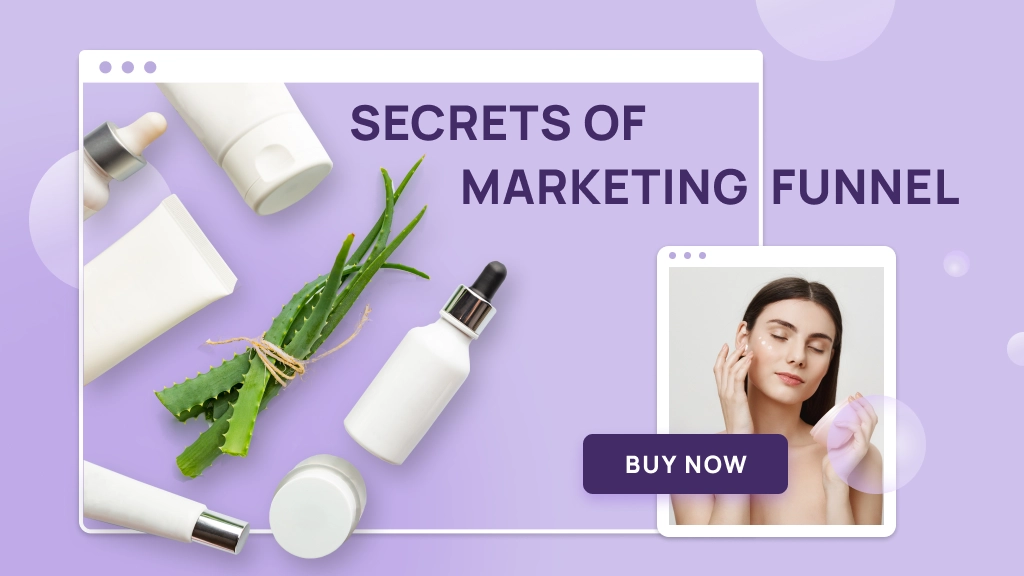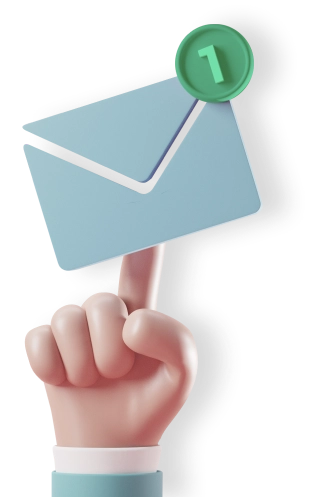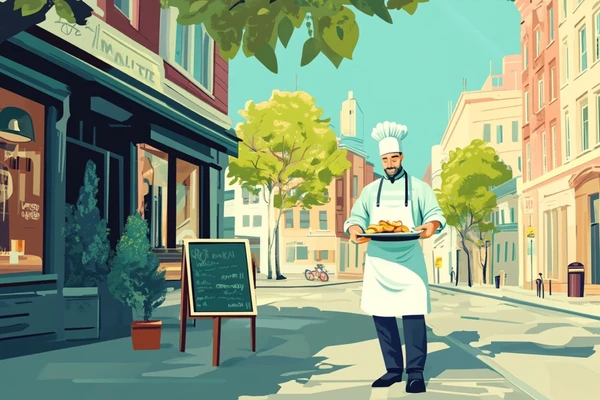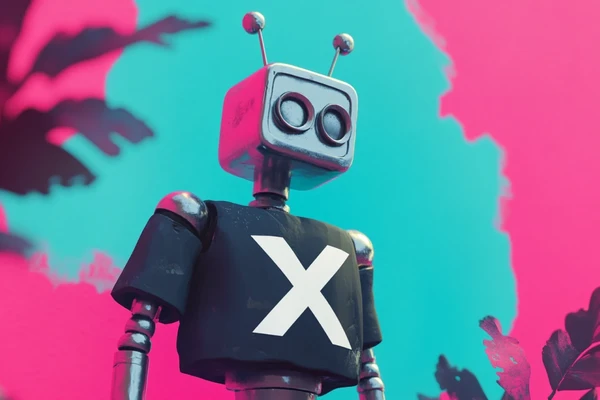According to Google, the traditional sales funnel that ends with a purchase by the customer is long gone. So forget everything you know about marketing funnels. I have prepared a guide to tell you how to build a modern marketing funnel for 2022. You will learn how to create a very effective funnel that meets your business's needs, allowing you to develop and maintain excellent relationships with customers. I have also created a ready-made formula for your comprehensive marketing funnel. Download it for free and tailor specific marketing activities to it.
What exactly is a marketing funnel?
Before we dive into the different steps of the online marketing funnel, let's quickly review its importance. Digital Marketing Funnel is one of the most critical elements of brand building and effective online sales. Funnel is a path that everyone goes through, from the first contact with your brand to becoming your regular customer. The first contact with your brand on the web is often through an advertisement in a search engine, a post on social media, or an e-mail.
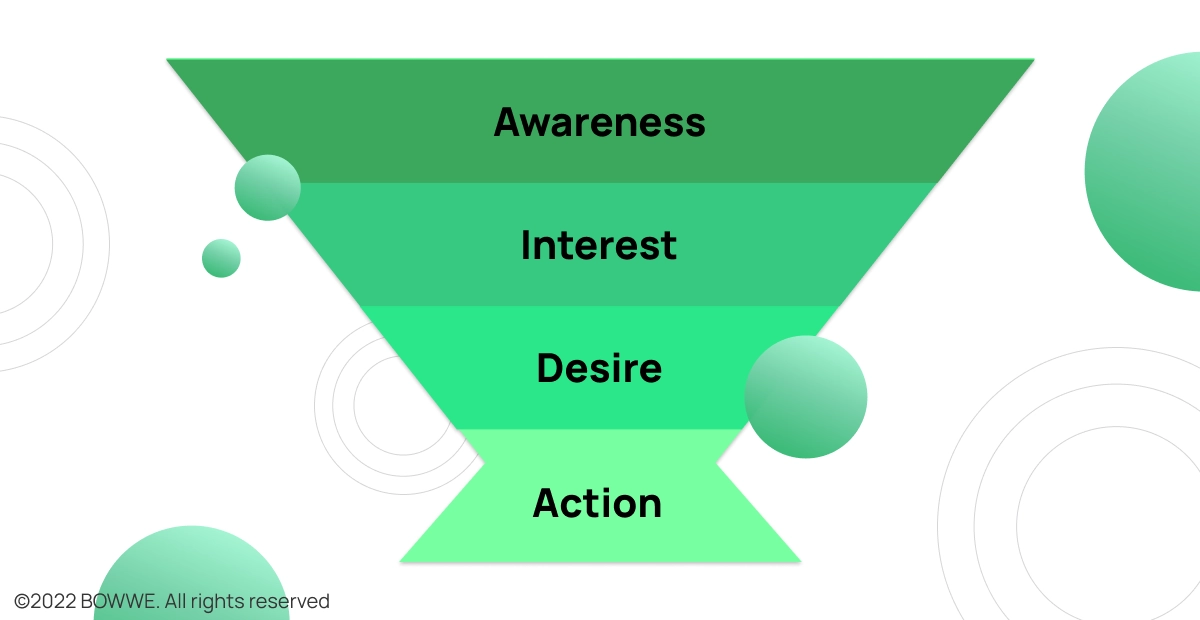
Classic marketing funnel infographic
The final step is the transaction, i.e., the sale. In the graphic visualization, the path in which the user becomes your client takes the shape of an inverted pyramid. At the start, you can reach a broad audience. With each step, however, the number of potential customers decreases until we get a handful of people who make the transaction and become your customers. It perfectly shows such a shopping path in the shape of a funnel - this is where the name marketing funnel comes from.
Marketing, sales, and conversion funnel - what are the differences?
A sales or marketing funnel, or even a conversion funnel - you may have come across these terms when seeking marketing and selling advice online.
What is the difference between these funnels?
1) Sales funnel - its purpose is always to sell. Provides you with information on the effectiveness of various sales activities.
2) Marketing funnel - its purpose is sales, although it can also be applied to other types of conversion, e.g., subscribing to a newsletter. At each stage of the marketing funnel, the goal is to influence customers' emotions, bringing them closer to selling.
3) Conversion funnel - is used to measure and optimize conversions at individual contact points between the customer and your brand.
Despite the slight differences, however, these names can be used interchangeably, as they each refer to the same process - the process a potential customer goes through, from the first contact with your business to the sale. Some even combine two names and use the term, i.e., a sales marketing funnel. And no wonder - after all, each funnel that brings significant profits combines sales and marketing activities. Unfortunately, many companies make a big mistake and treat the areas of marketing and sales separately. I would like to focus on a holistic approach. In this article, I will show you how combining them will allow you to create the perfect funnel model.
Why marketing funnel is important?
Statistics show that as many as 68% of companies have not even tried to build their own marketing funnel. You may also think that the marketing funnel will not help you at all, so you don't use it. You should, however, change this if you find yourself in one of these situations:
a) your website or online store is having poor sales,
many potential customers abandon shopping carts in your online store,
b) you are trying to increase sales, you promote the site in many ways, but the profits stand still,
c) customers rarely return to your business,
d) you want to increase conversion on your website,
e) you want to increase sales in your online store.
If your marketing activities do not bring the expected results and you are wondering what you are doing wrong - I have the answer for you! Probably your marketing funnel is ineffective at some stage, or you haven't built it yet. Whether you are a marketer or small or medium business owner, the marketing funnel is an absolute foundation in the digital world.
What are the marketing funnel stages?

Graphic of marketing funnel with AIDA
In the classic sales/marketing funnel model, the next steps follow the AIDA (Attention-Interest-Desire-Action) principle.
1) Awareness
User's first contact with your brand. At this point, the user learns about the existence of your company. How is this done on the web? The user may have seen a post on social media or an advertisement related to your business displayed to them if you previously ran a paid online marketing campaign.
2) Interest
Growing interest in what you offer, so they feel the need to learn more about you.
3) Desire
Decision and hesitates even before making the final choice. At this point, the user tries to make sure that their choice is correct, looks for opinions about you online, and compares your company to the competition.
4) Action/purchase
The user makes a purchase and officially becomes your customer (of course, if you managed to successfully carry it all the way to the goal).
The traditional marketing funnel usually ends at the time of purchase. For several years, however, this model has been abandoned, expanding the funnel with stages that consider marketing activities after the customer's purchase. This modern funnel model allows you to build a lasting relationship with your customers and earn on it for years by making them return regularly.
How does the interaction with your brand look at each marketing funnel stage?
As you can see, the marketing funnel is wide at the top, and then it gets narrower with each step. This simple visualization perfectly shows the flow of potential customers of your business. At the top, the widest part of the funnel, there is everyone who has come across your brand. They have a chance to become your customers, but they've just found out about you so far. The funnel gets narrower with each successive stage because it "filters out" those who are not interested in your offer. This way, potential customers move through the funnel towards the last step - making a purchase.
What does this mean in practice? You can reach many recipients, which doesn't mean that all of them will be interested in your offer. A smaller proportion of those interested will consider using your offer, and an even smaller proportion will.
So your task is to influence potential customers and, as a result, "push them" to each subsequent stage of the funnel. Increasing the flow between stages can significantly improve the final results of your sales. The key to success is getting your audience to interact with your brand at every funnel stage. But how to do it? I will tell you what exactly you should focus your attention on.
First, let's divide our funnel (and thus your customers' purchasing process) into 3 main phases:

Stages of the marketing funnel
ToFu (Top Of the Funnel) – everyone who has received information about your brand is at the top of the funnel. I'm talking about people who have had contact with your website, blog, ads, social media profiles, or even heard about your company from friends. Do you want to make the best impression on your audience from the first contact with your brand? Think about their needs and problems and prepare content to help them solve them. For example, if you sell dog food, write a short blog guide about what products are and are not allowed to be eaten by dogs. People found in ToFu usually have many questions, needs, and problems. This is an excellent opportunity to get to know your potential customers better and then offer them products or services that are better suited to them. But there will be time for that in the following steps.
MoFu (Middle of the Funnel) - those users who have already encountered your brand and want to learn more about it will go to the middle of the funnel. Recipients from the MoFu group already have a purchasing need - they only need to find out that it is your offer that brings real value to them. For this to happen, you need to:
1) remain in the minds of the audience - take care of factual content on your blog or newsletter to convince them that you are an expert who can be trusted.
inspire trust - make the recipients seriously consider your offer and move on to the final stage, i.e. BoFu. The best tool for this is a well-designed website. Also, remember to use the language of benefits that will convince your MoFu recipients that your products or services can be the solution to their problems.
2) inspire trust - make the recipients seriously consider your offer and move on to the final stage, i.e. BoFu. The best tool for this is a well-designed website. Also, remember to use the language of benefits that will convince your MoFu recipients that your products or services can be the solution to their problems.
BoFu (Bottom of the Funnel) – users who stayed at the last stage of the funnel are already considering your offer and are ready to make a purchase. However, you have to convince them to choose you and not the competition.Positive customer reviews, promotions, discount codes or user-generated content will work great for this purpose. Product descriptions, convincing CTAs and the possibility of smooth transaction finalization play a huge role at the final stage of BoF.
What does a modern marketing funnel look like?
When we think of a marketing funnel, we usually mean an inverted triangle shape. However, the modern marketing funnel is more elaborate - an additional cone at the bottom gives it an hourglass shape. This version of the digital marketing funnel also considers what happens to the customer relationship after they make a purchase.

Modern marketing funnel infographic
A modern sales funnel is enriched with stages related to building customer loyalty. This approach aims to create stronger relationships with your customers, also so that they voluntarily become loyal to your brand and help you generate leads. The modern funnel shows that what happens after the purchase (customer service, getting recommendations, building loyalty) is very important and has great potential to earn on subsequent purchases.
Why is it necessary to abandon the old model and adopt a non-linear marketing funnel?
The linear marketing funnels show the incomplete customer relationship process, and what's more, they focus solely on acquiring new customers. Such a strategy is usually very costly in terms of time and money. Although there are a lot of products and services (generally relatively simple, such as FMCG, clothing, and footwear) in which traditional funnels fulfill their role well, marketers also point out their disadvantages, such as:
a) they simplify reality too much,
b) they focus not on the customers and their needs but on the activities they should perform,
c) they will not always be successful in selling advanced, innovative, sub-script products, etc.
d) they don't take into account the already acquired customers.
The last disadvantage is the most important in the case of small businesses. The modern marketing funnel tends to sell, but it does so by focusing on customer needs and building relationships and loyalty. As a result, compared to the old model, the new model generates higher profits. The difference only increases with time - in favor of the new model.
How will a modern digital marketing funnel help you develop your business?
Did you know that as much as 79% of marketing leads are never converted into customers? An effective marketing funnel will help you avoid this. Building a modern marketing funnel will allow you to understand your customers' decisions, e.g., when they lose interest in your offer. A good funnel will help you effectively implement your company's marketing strategy. Matching content marketing activities to different stages of the funnel and testing whether they bring results is an excellent way to determine your client's needs and better respond to them.
7 steps guide for creating a comprehensive digital marketing funnel! [+ Ready-to-use template]
I will help you step by step to create a modern funnel and ensure its effectiveness at every stage. Here are the 7 most essential steps in your online marketing funnel and examples of actions you can take to get the highest conversions on each.
1. Increase brand awareness
The first step is to build brand awareness and reach out to everyone who may be interested in your offer. At this stage, improve your online visibility. Where should you start?
1) Improve SEO - at the beginning, it is worth focusing on making your website visible in search engine results. SEO optimization will help you fix errors and saturate your website with relevant key phrases. Thanks to this, you can direct your offer to the right group: people interested in your product or service.
2) Add your location to Apple Maps and Google Maps - create a business card on Google Maps or take care of your presence in Apple Maps to become visible to users of search engines. Thanks to this, all Internet users can quickly find the necessary information about your company and easily locate you.
3) Invest a small amount in advertising on social media - social media advertising campaigns Facebook Ads are a great way to reach people who may be interested in your products or services. Therefore, it is worth using the sales funnel model when creating ads on social channels.
4) Join groups that bring together your audience - if you have a well-defined target group, you can easily find places where your potential customers are on the web. Join the interest groups in which your recipients are sometimes - thanks to this, you have a chance to reach them with information about your offer.
2. Arouse the interest of recipients

In the second stage, customers are about to make a purchase, but first, they look for information on services or products offered in your industry. So you have to make them find your website and find answers to their questions there. First:
1) Publish a few articles on the page - think about your customer's problems and the answers to what questions they are looking for on Google. Then create articles (or another type of content) that comprehensively answer these questions.
2) Be active on social media - post regularly, but wisely - focus on quality, not quantity. Test different types of posts, e.g., quizzes, GIFs, polls, events, and short videos, and see what the recipients will answer. Use social media to share content from your website.
3) Let your recipients be up to date - it is worth informing potential clients about your plans or new products in your offer. This will arouse interest in your brand and encourage your audience to visit more often. When creating a website in BOWWE, you can use the apps "News", thanks to which your visitors will always be up to date. This will help you effectively keep their interest in what is happening in your company.
4) Create a Landing Page - you can use a Landing Page in a paid advertising campaign, e.g., Google Ads, to reach potential customers and inform them about your existence. The Landing Page will help you expand your customer base, e.g., by collecting newsletter subscriptions.
START NOW
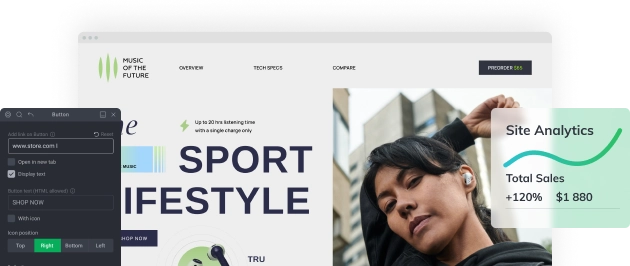
3. Build trust

At this stage, the interested customers know they want to buy your product or service. Before they choose your offer, they will hesitate between you and the competition. Therefore, you must inspire their trust to convince them to choose you. How to do it?
1) Show good reviews - post testimonials, i.e., favorable opinions of previous clients or employers about you. This will help you build the trust of customers who, at this stage, hesitate to use your products or services.
2) Take care of beautiful photos and descriptions - when creating descriptions, use power words, i.e. words that have a special impact on the emotions of the recipients. Power words are expressions that, inter alia, they arouse curiosity (secret way), trust (tested product), whether they relate to the will to have (free solution), etc. Properly used, they can motivate recipients to interact at every sales funnel stage. You can get full list of power words here.
3) Offer something more - offer your recipients a bonus, the so-called lead magnet, in return for subscribing to the newsletter or filling out the form. It doesn't have to be a big deal and will strain your budget. It is enough to present a small rebate code or a free e-book.
4) Create valuable content on your blog - it's worth taking care of the development of your blog on your company's website and regularly posting substantive articles there - it will help you achieve the position of an expert in your industry and convince your customers that you know what you are doing. It is worth publishing a guide from time to time in which you will explain how what you offer can solve your audience's problems. It's also a good idea to post instructions and explainers in which you can easily explain how your product works. When creating your website in BOWWE, you can easily add an explainer as a video, which will diversify your content.
4. Take care of details

In a moment, the customer will finally buy your product or decide to use the service. You can be proud of yourself - you have successfully led your client through the shopping path! So you can't allow yourself to make mistakes just before the finish line. In the last stage, take care of important details:
1) Call the customer to action - encouraging CTA ( Call-To-Action) in your online store or website is the key to success.
There are a few rules to creating an eye-catching CTA:
a) Good CTA should be short. It is best to fit your call to action into 2-3 words.
b) The CTA must not arouse the customer's anxiety. Example: Maybe instead of "Make an appointment", it is better to write "Book".
c) CTA is to convince the user to perform the action.
d) Take care of the appropriate arrangement and distinctive the CTA buttons' appearance so they are apparent.
2) Make sure your website works flawlessly - if you don't want to lose a customer on the final straight, your website won't be buggy. Test the entire page and make sure everything is working properly. Think about what else you can improve on it.
5. Maintain customer satisfaction
This stage begins after the sale, and the goal is customer retention. It is best not to waste time and plan it from the moment the purchase is completed. Customers will come back to you if they benefit from taking advantage of your offer. It can be greater convenience, speed, saving time, or money. At this stage, you can:
1) offer a code for the next shopping,
2) create a newsletter and send your customers dedicated content by e-mail containing hints or suggestions for solving their problems with your offer,
3) add something extra - just a small gesture that will make the customer feel special, e.g., a thank you card, a small gift in the package, or a guide on how to use the product.
6. Strengthen customer loyalty

This stage involves gradually developing the relationship with the customers and building their loyalty. You should apply him more and more in your brand, engaging him and ensuring he is satisfied with being your customer. At this stage, you can:
1) Build a community around your brand - it's a good idea to bring your audience together. For this purpose, you can create a group (e.g., on Facebook) that will connect your customers. Consider whether it should be available to all interested parties or only to those who have benefited from your offer.
2) Expand the offer - if the customer has already used your introductory offer, consider what they will need next and expand your request. If you offer it to him promptly, you will show that you care for him.
3) Create a loyalty program - this popular activity at the bottom of the sales funnel will help you strengthen your relationship with your customer. After-sales treatments that allow customers to save are a proven way to keep them with you for longer.
7. Get support
The culmination of the digital marketing funnel model is to make your customers the sincere supporters (advocates, ambassadors) of your brand. The success of the final stage depends on how well your customers have had from the previous steps. For even greater endorsement, you can:
1) Drive customers to share feedback
2) Encourage customers to create content with your brand
3) Offer a higher level of service to loyal customers
Use a modern model of a marketing funnel and adjust it to your business strategy
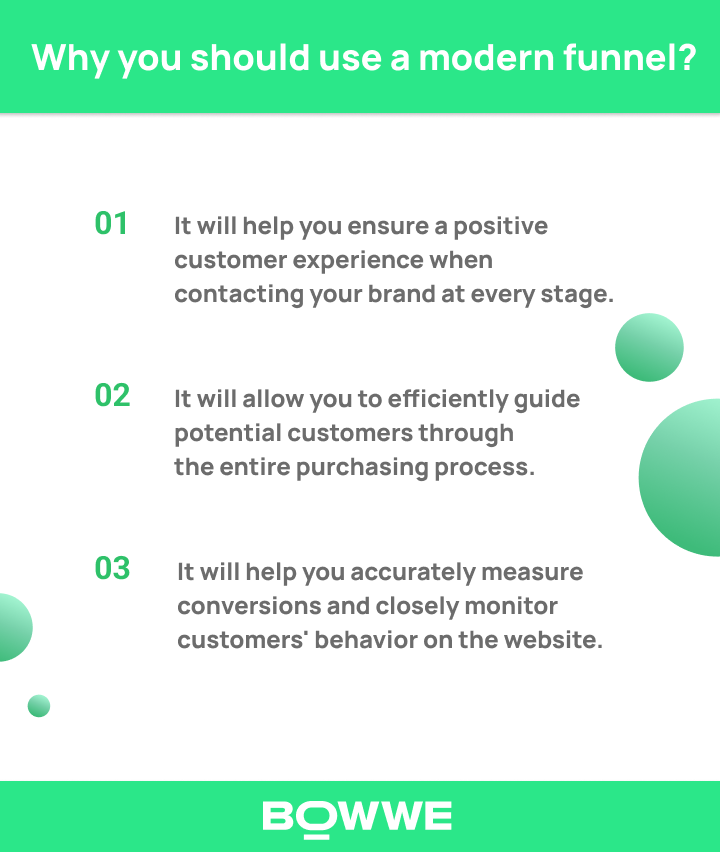
A digital marketing funnel is a tool that will allow you to embrace all sales processes and cleverly combine them with marketing activities. Create your own funnel structure, adjust your online marketing activities, and test what works for your business. Drawing the correct conclusions will help you to constantly improve your funnel model and create a strategy tailored to your business, guaranteeing considerable increases in sales.
I have developed the following modern funnel formula to make your work easier. It's ready to use, so download it and base it on actions to implement at each stage. Do it right now by clicking button below!
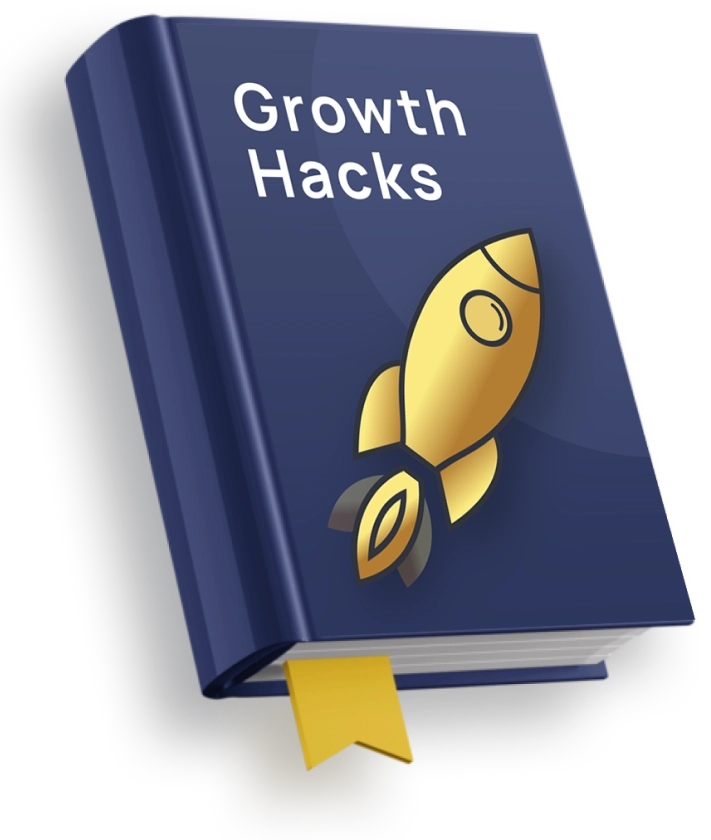

Karol is a serial entrepreneur, e-commerce speaker m.in for the World Bank, and founder of 3 startups, as part of which he has advised several hundred companies. He was also responsible for projects of the largest financial institutions in Europe, with the smallest project being worth over €50 million.
He has two master's degrees, one in Computer Science and the other in Marketing Management, obtained during his studies in Poland and Portugal. He gained experience in Silicon Valley and while running companies in many countries, including Poland, Portugal, the United States, and Great Britain. For over ten years, he has been helping startups, financial institutions, small and medium-sized enterprises to improve their functioning through digitization.

